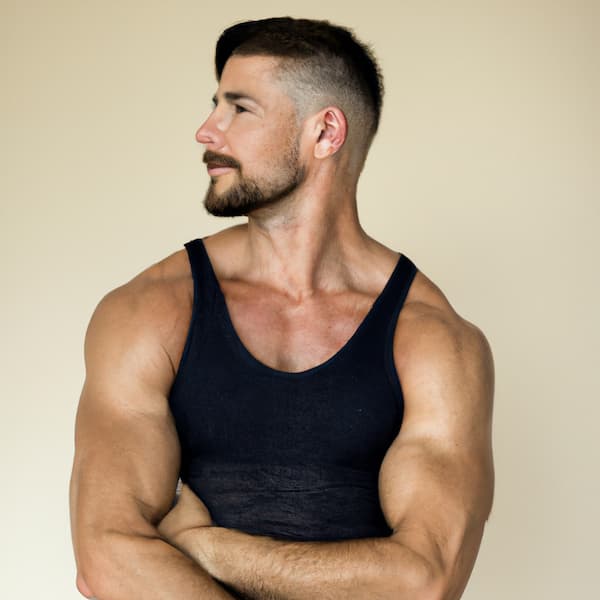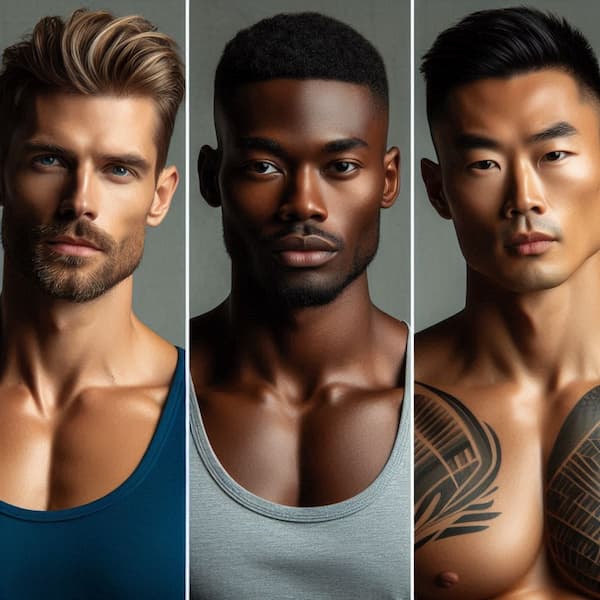The short answer is yes - you absolutely use one photo aspect ratio across all your platforms, and the 1:1 square format stands as your best choice. Many content creators waste countless hours resizing images for different platforms, but this practice creates unnecessary work while potentially diluting your brand consistency. Smart brands have discovered that standardizing on square photos streamlines their workflow and creates a recognizable visual identity across all touchpoints. This comprehensive guide will show you exactly how to implement this strategy and why it works so well for modern digital marketing.

The Universal Appeal of Square Photos
Square photos work exceptionally well because they fit naturally into most platform layouts without requiring cropping or distortion. Instagram popularized this format, and other platforms quickly adapted to accommodate square images in their feeds and display systems. Your website hero sections, blog post thumbnails, and social media posts all look cohesive when using the same 1:1 ratio. The human eye processes square compositions easily, making them naturally pleasing across different viewing contexts.
Research shows that square photos receive higher engagement rates on most social platforms compared to other aspect ratios. This format forces photographers and designers to create more focused, centered compositions that translate well to small mobile screens. The symmetrical nature of squares creates a sense of stability and professionalism that builds trust with viewers. Modern content management systems and social media schedulers also handle square images more efficiently, reducing technical headaches for busy content creators.
Practical applications for square photos:
Social media posts perform consistently well across Instagram, Facebook, LinkedIn, and X when using square format.
The 1:1ratio displays properly in feed previews, story highlights, and profile grids without awkward cropping. Most social platforms optimize their algorithms for square content, giving your posts better visibility in user feeds. You'll notice increased engagement rates when your followers see clean, properly formatted images instead of oddly cropped rectangles.
Website galleries and product showcases look more professional with uniform square thumbnails.
E-commerce sites benefit tremendously from this consistency, as customers process product information more quickly when all images follow the same format. Blog post featured images create a cleaner archive page when they're all squares, making your content easier to browse. Portfolio websites gain visual coherence that helps visitors focus on your work rather than getting distracted by inconsistent formatting.
Email marketing campaigns achieve better click-through rates with square images that display correctly across different email clients.
Newsletter templates work more reliably when you stick to one aspect ratio, reducing the risk of broken layouts on mobile devices. Square photos load faster in email clients, improving the user experience for your subscribers. Marketing automation platforms handle square images more predictably, ensuring your campaigns look professional regardless of how recipients view them.
Print materials like business cards, brochures, and flyers accommodate square photos more easily than rectangular ones.
Designers have more flexibility when working with square images, as they fit into both portrait and landscape layouts without forcing awkward compositions. Square photos work well in grid-based designs, creating clean, organized layouts that communicate professionalism. Print costs often decrease when you use consistent sizing, as printers handle uniform image dimensions more efficiently.

Platform-Specific Advantages
Each major platform handles square photos differently, but all support them well enough to make standardization worthwhile. Instagram obviously loves squares, but Facebook, LinkedIn, and X also display them beautifully in feeds and previews. Your website content management system will thank you for using consistent dimensions, as it reduces loading times and improves mobile responsiveness. Even emerging platforms tend to support square images well, future-proofing your content strategy.
The technical benefits extend beyond just visual appeal - square photos compress more efficiently for web use, reducing bandwidth costs and improving page load speeds. Mobile users, who make up the majority of social media traffic, prefer square images because they take up optimal screen real estate without requiring zooming or scrolling. Search engines also favor websites with consistent image formatting, potentially boosting your SEO rankings. Cloud storage services handle square images more efficiently, making backups and synchronization faster.
Platform optimization strategies:
Instagram feed posts, stories, and reels all accommodate square photos without any modifications needed.
The platform's algorithm favors content that displays well in multiple formats, giving square images an advantage over other aspect ratios. IGTV covers and highlight thumbnails look cleaner when they match your main feed's square aesthetic. Your Instagram profile grid creates a cohesive visual story when all posts follow the same format.
Facebook business pages display square images beautifully in both desktop and mobile feeds.
The platform's preview system works better with square images, showing more of your content in user timelines without cropping. Facebook ads perform better with square visuals, as they stand out more effectively in crowded news feeds. Event cover photos and page profile pictures work well as squares, creating consistent branding across all your Facebook presence.
LinkedIn posts receive higher professional engagement when using clean, square images.
The platform's business-focused audience appreciates consistent, polished visual presentations that square photos naturally create. Company page updates look more authoritative with uniform square images, building trust with potential clients and partners. LinkedIn article featured images perform better when they're squares, as they display correctly in both mobile and desktop article previews.
X posts with square images receive more retweets and likes than those with other aspect ratios.
The platform's timeline layout accommodates squares perfectly, ensuring your content displays properly across all device types. X card previews look cleaner with square images, encouraging more clicks to your website or blog. Profile headers and avatar images work together more harmoniously when your posted content maintains the same square format.

Technical Implementation Tips
Setting up your workflow for square photos requires some initial planning, but the long-term benefits far outweigh the setup time. Most photo editing software allows you to set custom crop ratios, making it easy to standardize your process. Camera settings and smartphone apps also support square shooting modes, letting you capture content in the right format from the start. Content management systems and social media scheduling tools work more efficiently when all your images follow the same specifications.
The key lies in planning your compositions with the square format in mind rather than cropping after the fact. Professional photographers often shoot slightly wider than needed, then crop to square during post-processing to ensure nothing significant gets cut off. Batch processing tools like Photoshop actions or Lightroom presets speed up the conversion process for existing rectangular images. Cloud-based editing platforms make it easy to maintain consistent formatting across team members and multiple devices.
Technical setup recommendations:
Camera and smartphone settings should be configured to shoot in square mode whenever possible.
Most modern devices offer built-in square shooting options that help you compose better shots from the beginning. Third-party camera apps often provide more advanced square shooting features than default camera applications. Professional cameras with customizable aspect ratio overlays help you visualize the final square composition while shooting.
Photo editing software presets streamline the process of converting existing rectangular images to squares.
Lightroom crop presets maintain consistent positioning and sizing across large batches of photos. Photoshop actions automate the entire process, including resizing, sharpening, and color correction for web use. Online editing platforms like Canva offer templates specifically designed for square social media posts.
Content management systems work more efficiently with standardized image dimensions.
WordPress themes display square images more predictably, reducing layout issues across different post types. E-commerce platforms load faster when product images follow consistent sizing guidelines. Blog themes maintain better visual hierarchy when featured images are all squares, improving the overall user experience.
Social media scheduling tools handle square images more reliably than mixed aspect ratios.
Platforms like Hootsuite and Buffer preview square images accurately, showing exactly how your posts will appear to followers. Automated posting systems make fewer errors when all images follow the same format specifications. Analytics tracking becomes more accurate when you eliminate variables related to image formatting and sizing.

Brand Consistency Benefits
Visual consistency builds stronger brand recognition than any other single factor in digital marketing. When your audience sees the same image format across all platforms, they begin to associate that consistent look with your brand identity. This recognition happens subconsciously, making your content more memorable and trustworthy in crowded digital spaces. Square photos create a signature look that helps you stand out from competitors who use mixed aspect ratios.
The psychological impact of consistent visual formatting extends beyond just aesthetics - it communicates professionalism and attention to detail. Potential customers judge businesses within seconds of viewing their online presence, and consistent image formatting signals reliability and quality. This consistency also makes your content more shareable, as followers feel confident that anything they share from your brand will look good on their own profiles. Brand partnerships and collaborations become easier when other businesses see your polished, consistent visual approach.
Brand building strategies:
Logo integration works more seamlessly with square images, creating natural spaces for watermarks and branding elements.
Square formats provide balanced compositions that accommodate logos without disrupting the main visual content. Consistent placement of brand elements across all square images builds stronger visual recognition over time. Social media followers begin to recognize your content even before seeing your username or page name.
Color palette consistency becomes more noticeable when all images follow the same square format.
Brand colors have more impact when they're not competing with inconsistent image shapes and sizes. Square photos create predictable backgrounds for overlaying brand colors and design elements. Visual cohesion across platforms reinforces brand identity more effectively than text-based branding alone.
Typography and text overlays work better with square images, creating more professional-looking promotional content.
Square compositions provide natural balance for text placement, making your promotional posts more readable and visually appealing. Font choices and text sizing remain consistent across platforms when you're working with standardized image dimensions. Call-to-action buttons and promotional messaging integrate more seamlessly with square photo layouts.
Product photography benefits tremendously from square formatting, especially for retail and e-commerce brands.
Customers process product information more quickly when all images follow the same format, reducing decision fatigue during shopping. Square product shots work well in catalog layouts, website grids, and social media shopping features. Inventory management becomes simpler when all product images follow the same specifications and file naming conventions.
Workflow Optimization
Creating an efficient workflow around square photos saves significant time and reduces errors in your content creation process. Batch processing becomes much simpler when you're working with a single aspect ratio, allowing you to edit multiple images simultaneously. Template creation for social media posts, website headers, and marketing materials becomes straightforward when you know all images will be squares. Team collaboration improves when everyone follows the same image formatting standards.
The efficiency gains compound over time, as your library of square images grows and becomes more versatile. Repurposing content across platforms requires minimal adjustment when everything starts as a square. Archive organization becomes more logical when all images follow the same format, making it easier to find and reuse content later. Client presentations and portfolio reviews flow more smoothly when all images display consistently without formatting distractions.
Workflow enhancement techniques:
Photo editing templates and presets eliminate repetitive formatting tasks while maintaining quality standards.
Lightroom develop presets apply consistent color correction, sharpening, and sizing to entire batches of square images. Photoshop actions automate complex editing sequences, reducing the time needed to prepare images for different platforms. Online editing platforms offer shareable presets that keep team members aligned on visual standards.
Content calendar planning becomes more efficient when you're working with a single image format.
Monthly content planning requires less time when you don't need to consider different aspect ratios for different platforms. Social media schedulers work more predictably with standardized image dimensions, reducing posting errors and timeline disruptions. Content repurposing across platforms becomes almost automatic when all images start as squares.
Asset organization systems work better with consistent file naming and formatting conventions.
Cloud storage folders make more sense when all images follow the same specifications, making file retrieval faster and more intuitive. Version control becomes simpler when you're not juggling multiple aspect ratios for the same content. Backup systems handle uniform file sizes more efficiently, reducing storage costs and transfer times.
Team collaboration improves significantly when everyone follows the same image formatting standards.
Design handoffs between team members require less back-and-forth when image specifications are predetermined. Client approval processes move faster when all presented images follow consistent formatting. Freelancer and contractor onboarding becomes simpler when image requirements are clearly defined and standardized.
Making the Switch
The transition to using square photos exclusively requires some initial effort, but the long-term benefits make it worthwhile. Start by auditing your current image library and identifying which photos work well as squares versus those that need replacement. Many existing rectangular images crop well to squares if they were composed with enough space around the main subject. New content should be planned and shot with the square format in mind from the beginning.
The adjustment period typically lasts 2-3 months as you build up a library of square images and establish new workflows. Your audience will notice the improved consistency, often commenting on how much more professional your brand looks across platforms. Analytics typically show improved engagement rates within the first month of implementing consistent square formatting. The time investment pays dividends through reduced editing time, better platform performance, and stronger brand recognition.
Your visual identity will become more memorable and recognizable as you consistently use square photos across all platforms. The streamlined workflow will free up time for creating better content rather than wrestling with formatting issues. Most importantly, your brand will communicate professionalism and attention to detail that sets you apart from competitors who still struggle with inconsistent image formatting.
Is There a Universal Photo Ratio for All Platforms?
Standardizing on square photos represents one of the smartest decisions you'll make for your digital presence. The format works beautifully across all major platforms, requires minimal technical adjustment, and creates a cohesive brand identity that builds trust with your audience. Your workflow becomes more efficient, your content performs better, and your brand looks more professional without requiring any additional design skills or expensive software.
The square format isn't just a trend - it's a practical solution to the multi-platform content challenge that every modern brand faces. By adopting this approach, you'll join successful companies and content creators who have discovered that consistency trumps variety when it comes to visual branding. Your future self will thank you for making this decision, as will your audience, who will appreciate the polished, professional appearance of your content across all touchpoints.
Remember that great content matters more than perfect formatting, but when you get both right, the results speak for themselves. Square photos give you the foundation for consistent, professional-looking content that performs well everywhere you post it. Make the switch today, and start building the cohesive visual brand that your business deserves.
Did You Know You Already Have A LOT To Sell?
So What's Your Problem?


Author Bio: Zooper
As a magician and mindreader, I have dedicated my life to spreading positivity to the world. Reality may be an illusion, but that doesn't mean happiness is. Open yourself to the extraordinary hidden within it, and watch your joy take flight. This is the truth I'm on a mission to share.
